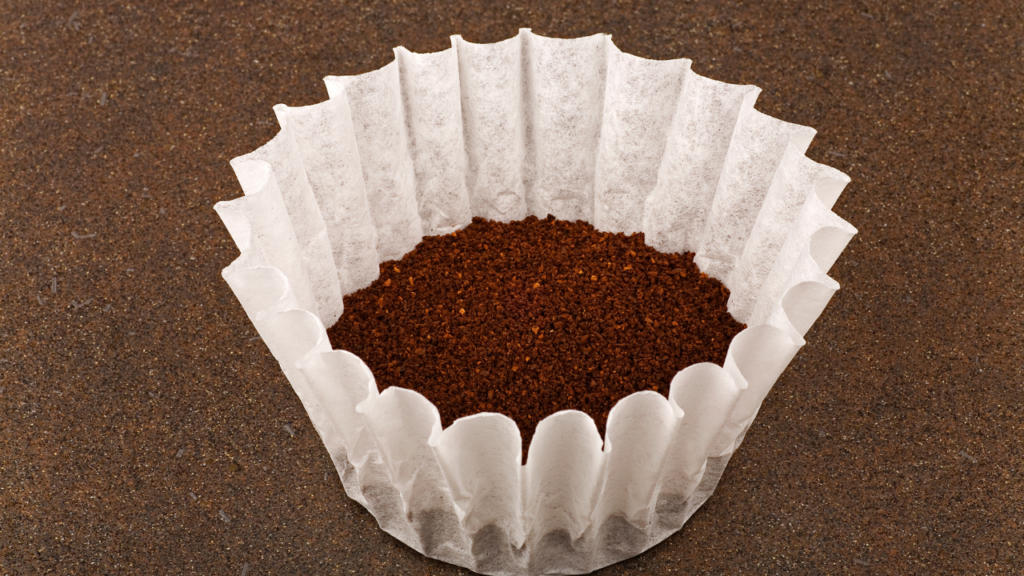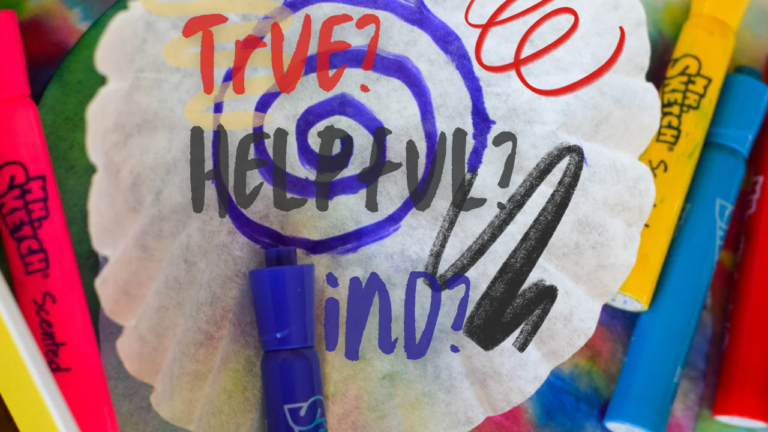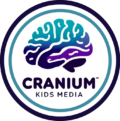Imagine sitting in a classroom when a student blurts out, “That’s a dumb idea!” The room falls silent, and you can see the hurt in their classmate’s eyes. The student didn’t mean to be unkind—they were just thinking out loud. But words, once spoken, can’t be taken back.
Children often struggle with impulse control and social awareness, not because they want to be rude, but because they haven’t yet developed the skills to filter their thoughts before speaking.
Just like a coffee filter keeps gritty grounds out of a smooth cup of coffee, a social filter helps us decide which thoughts to share and which to keep inside our heads. By teaching students to pause and THINK before speaking—asking themselves, Is it True? Helpful? Kind?—we empower them to communicate with kindness, build stronger relationships, and develop self-control.
This lesson uses hands-on demonstrations, movement-based activities, and a creative art project to make the concept of a social filter both memorable and meaningful.
Let’s help students use their social filter to master the art of “Say It or Save It?”!
CASEL Competencies:
- Self-Awareness – Recognizing how words impact others
- Self-Management – Using a filter to regulate speech
- Relationship Skills – Communicating with kindness
- Responsible Decision-Making – Thinking before speaking
ASCA Mindsets & Behaviors:
- M 3: Sense of belonging in the school environment
- M 5: Belief in using abilities to their fullest
- B-SMS 1: Demonstrate self-discipline and self-control
- B-SS 2: Create positive and supportive relationships
- B-SS 4: Demonstrate empathy
Grade Level: Elementary
Duration: 30–45 minutes
Materials
✅ Coffee filters (one for demo plus additional for students)
✅ Small baggie of ground coffee (for demo)
✅ Markers
✅ Spray bottle with water
✅ “Say It or Save It?” sorting signs (or labels)
✅ Printed THINK poster (optional)
✅ Index cards with sample thoughts (examples included below)

Engage – "Filters Help Us!" (5-7 min)
☕ The Coffee Filter Demonstration
Show a coffee filter and a small baggie of ground coffee.
- “This is a coffee filter. What does it do?” (Take responses.)
Set up the filter and explain the process:
- “First, I place the filter inside my coffee maker.”
- “Next, I put the ground coffee in the filter.” (I usually leave the coffee in the plastic baggie to avoid a spill.)
- “But if I drink coffee with the grounds still in it, it wouldn’t taste very good. It would be gritty, bitter, and unpleasant.”
- “When I start the coffee maker, hot water pours over the coffee grounds. The filter lets the coffee’s flavor pass through, but it catches the gritty parts so they don’t end up in my cup.”
Connect to the Brain’s Social Filter:
- “Just like a coffee filter decides what gets through, our brains have a filter too! It’s called a social filter, and it helps us decide which thoughts should stay in our head and which should come out as words.”
- “If a coffee filter didn’t work, we’d end up with gritty coffee. And if our social filter doesn’t work, we might say things that aren’t kind or helpful.”
🌬️ The Air Filter Connection (Optional Extension)
Hold up an air filter (or show a picture of one).
- “Here’s another type of filter—an air filter! Who knows what this does?” (Take responses.)
- “Air filters trap dust and dirt so we don’t breathe it in. They help keep the air clean.”
Bridge the Connection:
- “Just like an air filter cleans the air, our social filter cleans our words! It helps us decide which thoughts should be shared and which should be kept inside.”
💭 Essential Questions
- “If we didn’t use a filter when we speak, what could happen?”
- “Why do you think it’s important to have a social filter?”
- “How do we decide which words to say and which to save?”
Explore - "Say It or Save It?" (10 min)
👉Activity:
- Place two signs on opposite sides of the room:
✅ “Say It”
❌ “Save It” - Read different thoughts aloud.
- Students decide if it should be spoken aloud or saved and move accordingly:
- Jump to “Say It” if the statement passes the social filter.
- Freeze in place for “Save It” if the statement should stay in their head.
📢 Examples:
✅ “That’s a great idea!” (Say It)
❌ “Your drawing is ugly.” (Save It)
✅ “Do you want to sit with me?” (Say It)
❌ “This game is so boring.” (Save It)
💡 Discussion:
- “What do we notice about the things we choose to say out loud?”
- “How would you feel if someone said the negative thoughts to you?”
Explain The THINK Strategy – Filtering Our Thoughts (10 min)
✅ Introduce the THINK Strategy: Before you speak, stop and THINK:
- Is it True?
- Is it Helpful?
- Is it Inspiring?💡
- Is it Necessary?
- Is it Kind?
💡Helpful Tip: Simplify for younger students, focusing on True, Helpful, and Kind.
📌 Scenario Discussion:
Read a scenario and ask students: “Does it pass the THINK test?”
📢 Example:
- Aiden got a new haircut, and you liked the old one better.
- Thought: “Ewww, what happened to your hair?”
- THINK Check: ❌ Not Helpful. Not Kind. Save It.
🌟 Key Takeaway:
“We can’t control everything, but we CAN control our words, actions, and how we treat people!”
Elaborate -STEAM Art Activity (10-15 min)
🎨 Decorate Your Social Filter:
- Give each student a coffee filter and markers.
- Have them write “THINK” in big letters and decorate it.
- Lightly spray the filter with water to create a blended color effect.
- Display the filters in the classroom as a reminder to use their social filter.

Evaluate – What Did We Learn? (5 min)
💭 Reflection Questions:
- “What did you learn about the social filter today?”
- “What happens when we don’t THINK before we speak?”
- “What’s one way you can practice using your social filter this week?”
✍️ Exit Ticket:
- Have students write one example of a kind and helpful thing they can say to a friend or family member today.
Watch this Lesson on YouTube
Extend (Take-Home Activities & Next Steps)
📌 Home Connection:
- Challenge students to teach a family member the THINK test and report back.
📝 Journal Prompt:
- “Write about a time when someone used hurtful words toward you. How did it make you feel? How can THINK help prevent that from happening?”

